A Fresh Coat of Paint: Revamping My DWM Setup
It's hard to believe how long I've been using dwm as my window manager. A rough guess would be around 14 or 15 years!
Why dwm?
I've never been one for traditional desktop environments, even back when I first started using GNU/Linux. My introduction to Debian came through a window manager called IceWM. At the time (when Windows XP was all the rage), I thought it was the coolest thing ever! I was 17, and I saw it on my mentor's computer. I knew immediately: I had to have it!
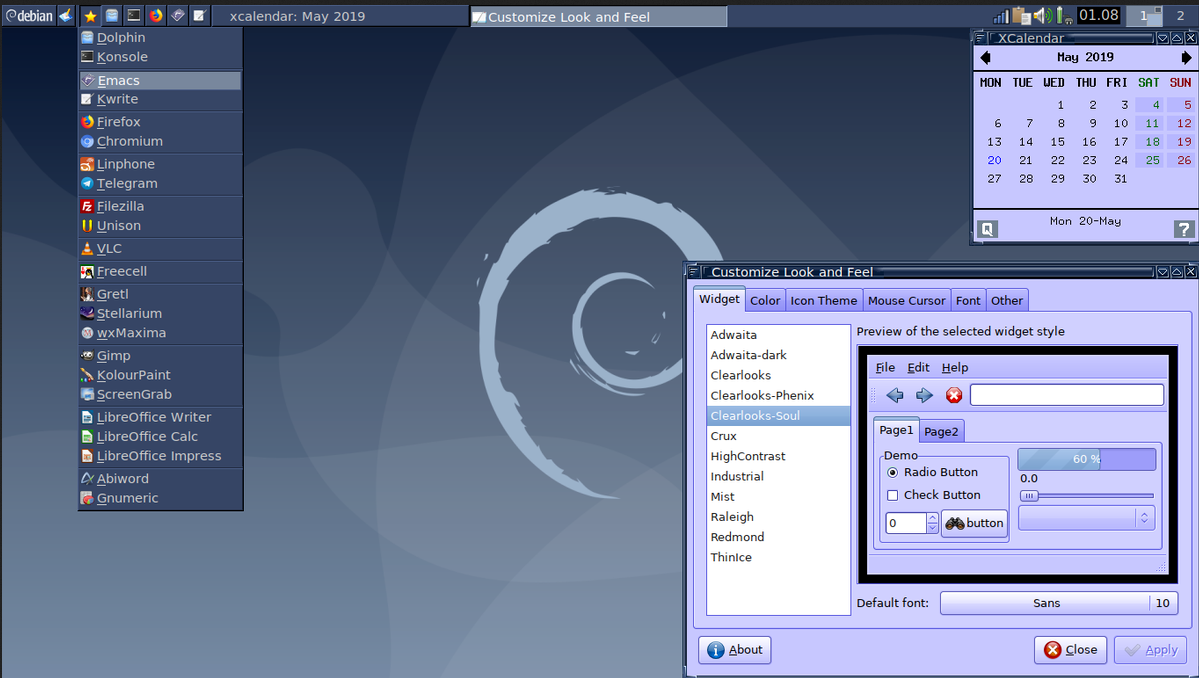
My mentor, wise as he was, suggested I try Debian in a virtual machine first to learn the ropes in a safe environment. Smart guy. But I was always a bit overeager. After a week, I ditched Windows entirely and embraced the GNU/Linux ecosystem.
After a year or two with IceWM, I met someone on IRC who was using dwm. I hadn't heard of tiling window managers at that point, but I was intrigued. I loved the minimalism and the fact that almost everything could be controlled with the keyboard using Vim-like motions. I gave it a try, and it instantly clicked with my workflow.
What impressed me most about dwm:
-
Dynamic Tiling
- Automatic Layout: dwm automatically arranges windows in a tiled layout, maximising screen space and eliminating the need to hunt for windows on the taskbar.
- Multiple Layouts: With a quick keypress, I can switch between tiled, monocle, and floating layouts to suit my needs at any given moment.
- Borderless Windows: No more borders! This gives me more screen real estate for my code and eliminates the need to fiddle with the mouse for resizing or moving windows. A simple click and drag anywhere on the window (while holding Alt) does the trick.
-
Keyboard-Driven Efficiency
- Most actions are performed with keyboard shortcuts, making navigation and window management a breeze without ever touching the mouse.
- The keybindings are fully customisable, so I can set them up exactly how I like them.
-
Tags (Virtual Desktops on Steroids)
- Tags are like virtual desktops, but better! They let me organise windows into logical groups. With my dual monitor setup, I effectively have 18 different "desktops" – perfect for someone who likes to have a lot of windows open!
- Switching between tags is seamless with Alt+1-9. Windows later adopted a similar feature, but it feels clunky compared to dwm's native tag implementation.
-
Simplicity and Clarity
- dwm has a clean and uncluttered interface, free from distractions. This allows me to focus solely on the task at hand.
- Functionality is prioritised over visual aesthetics.
So, I made the switch to dwm, and I haven't looked back. I briefly tried awesomeWM, but it didn't quite feel as natural.
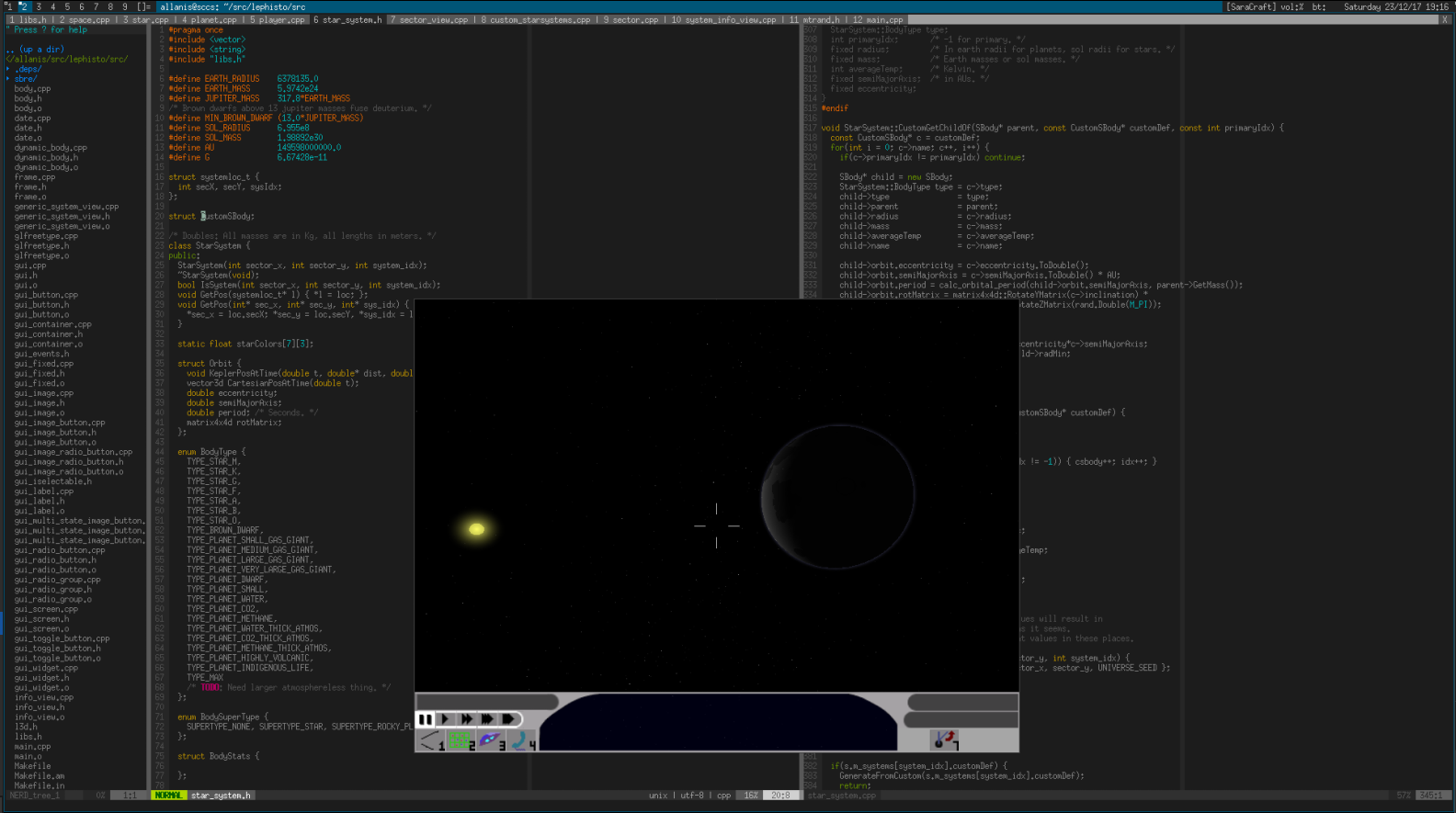
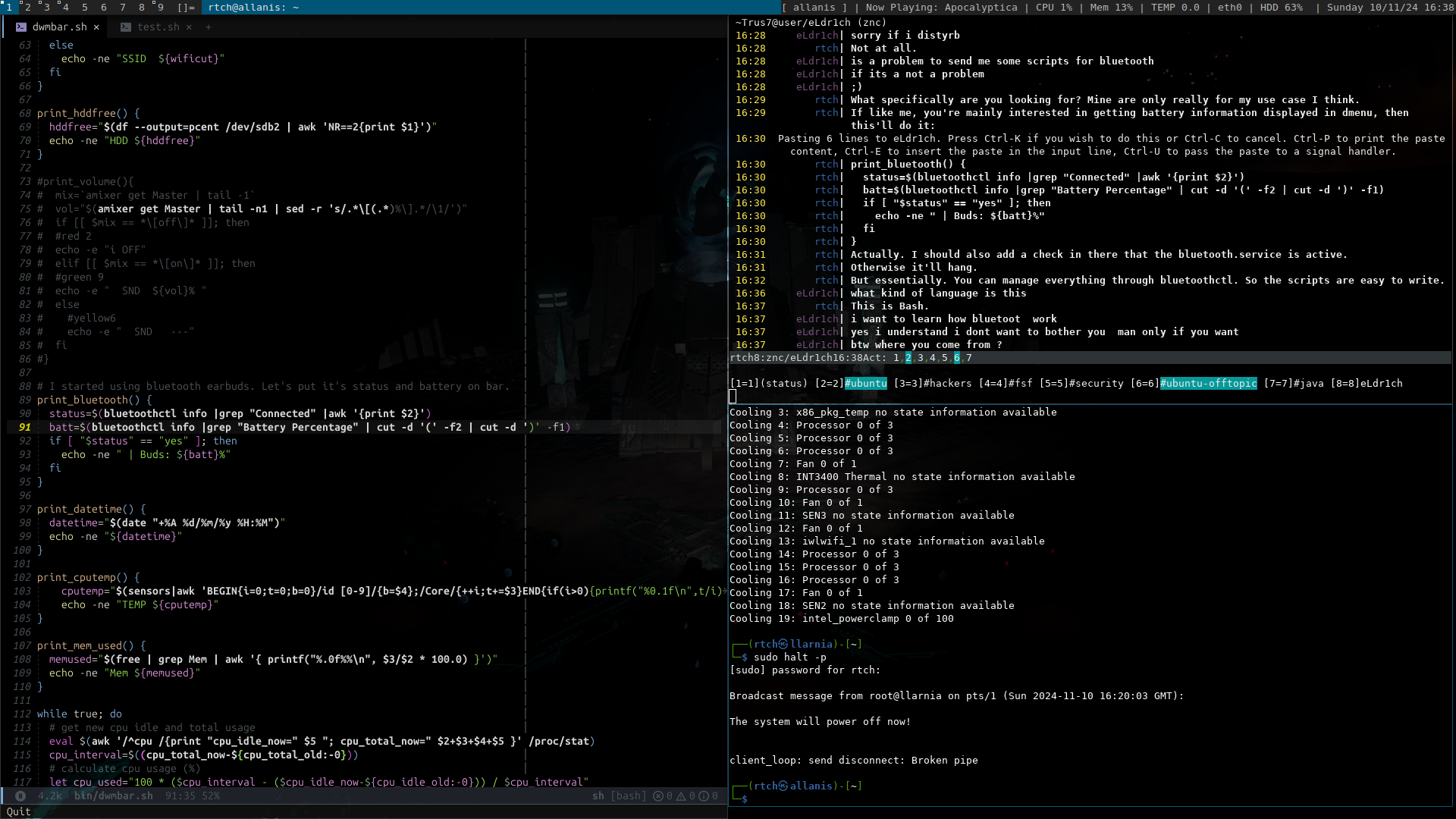
While I enjoyed this default dwm look for many years, it's time for a change.
Customising dwm
First, I wanted a wide variety of wallpaper options. I downloaded around 100 different wallpapers that caught my eye and organised them into subfolders.
Next, I made some minor tweaks to the dwm source code. Nothing major – just changed the fonts, added small gaps between windows, and made floating windows spawn in the centre.
I stumbled upon a fantastic project called Pywal, which generates colour palettes from wallpapers and updates my terminal colour scheme accordingly! How cool is that?
After installing Pywal, I wrote a Bash script to change the wallpaper, run Pywal to set my terminal colours, update the dwm colours, recompile dwm, and relaunch it. There are a few different scripts involved, I've included the main one at the bottom of this post.
I also rewrote my old dwm status bar script to include more information and use some nerdfonts to make it look nicer and save space.
By putting these scripts in my xinit configuration, I get a fresh new look every time I log in. Plus, I have the flexibility to instantly switch to a new wallpaper theme whenever I want. Here are a few examples:
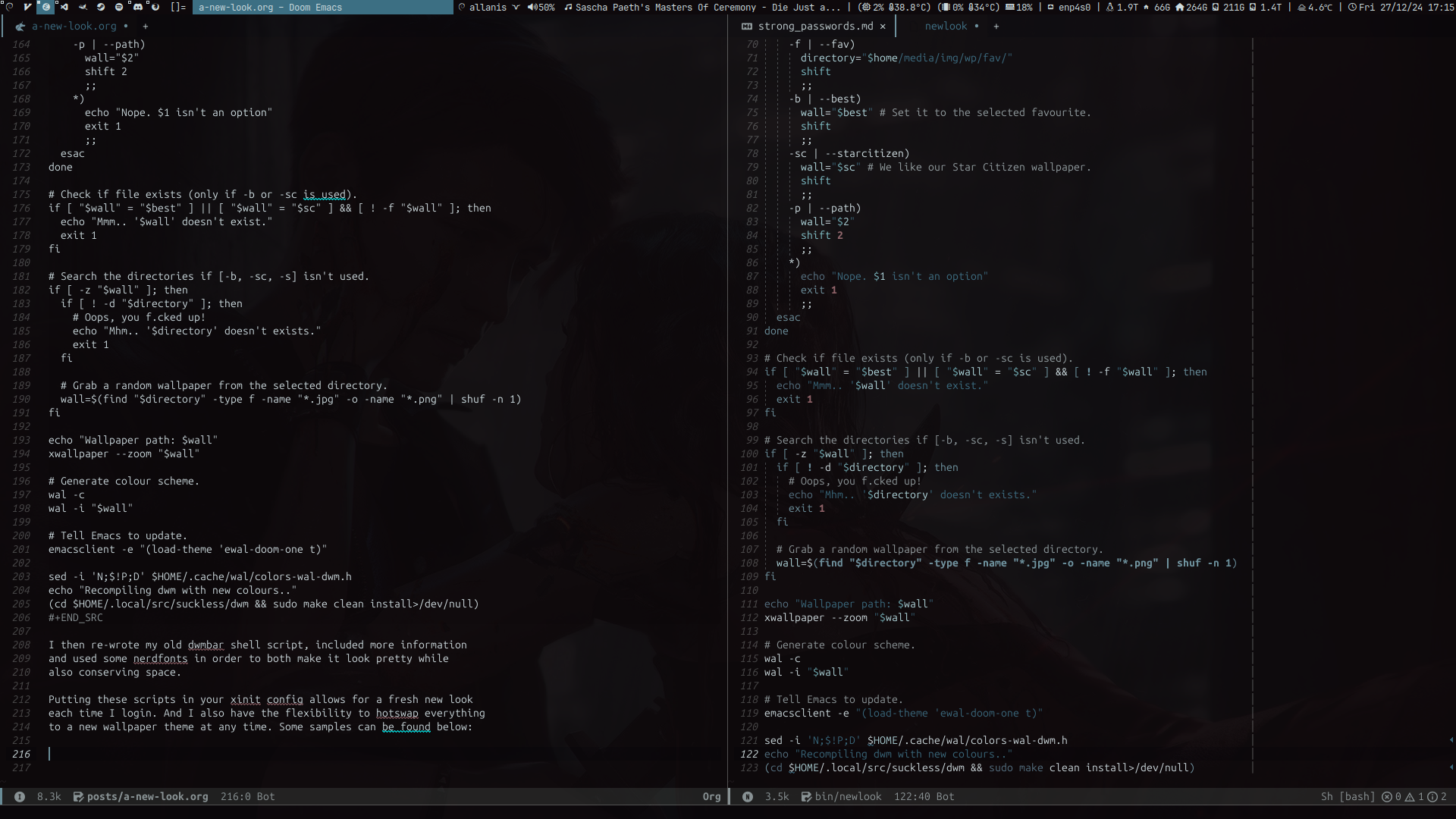
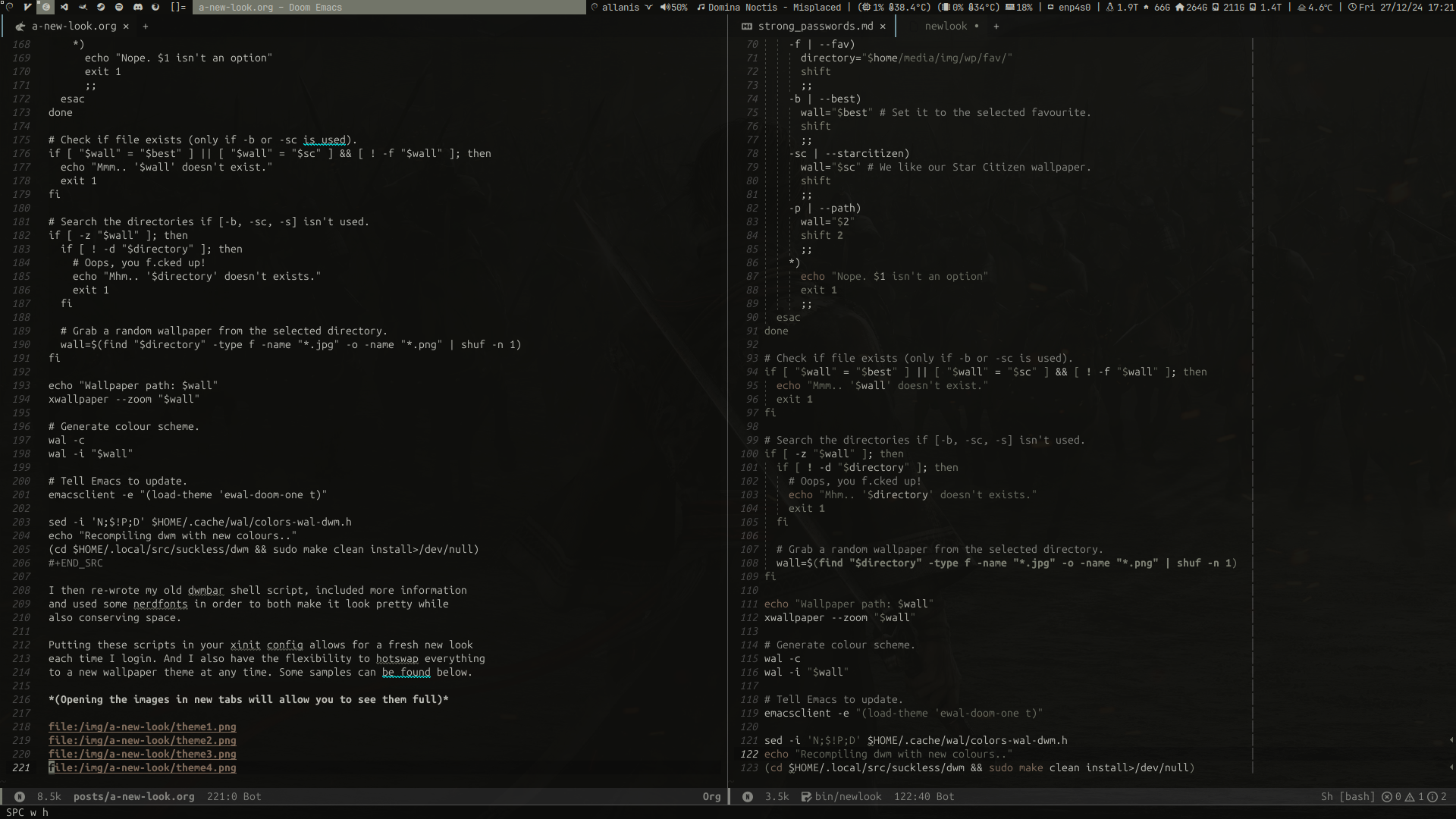
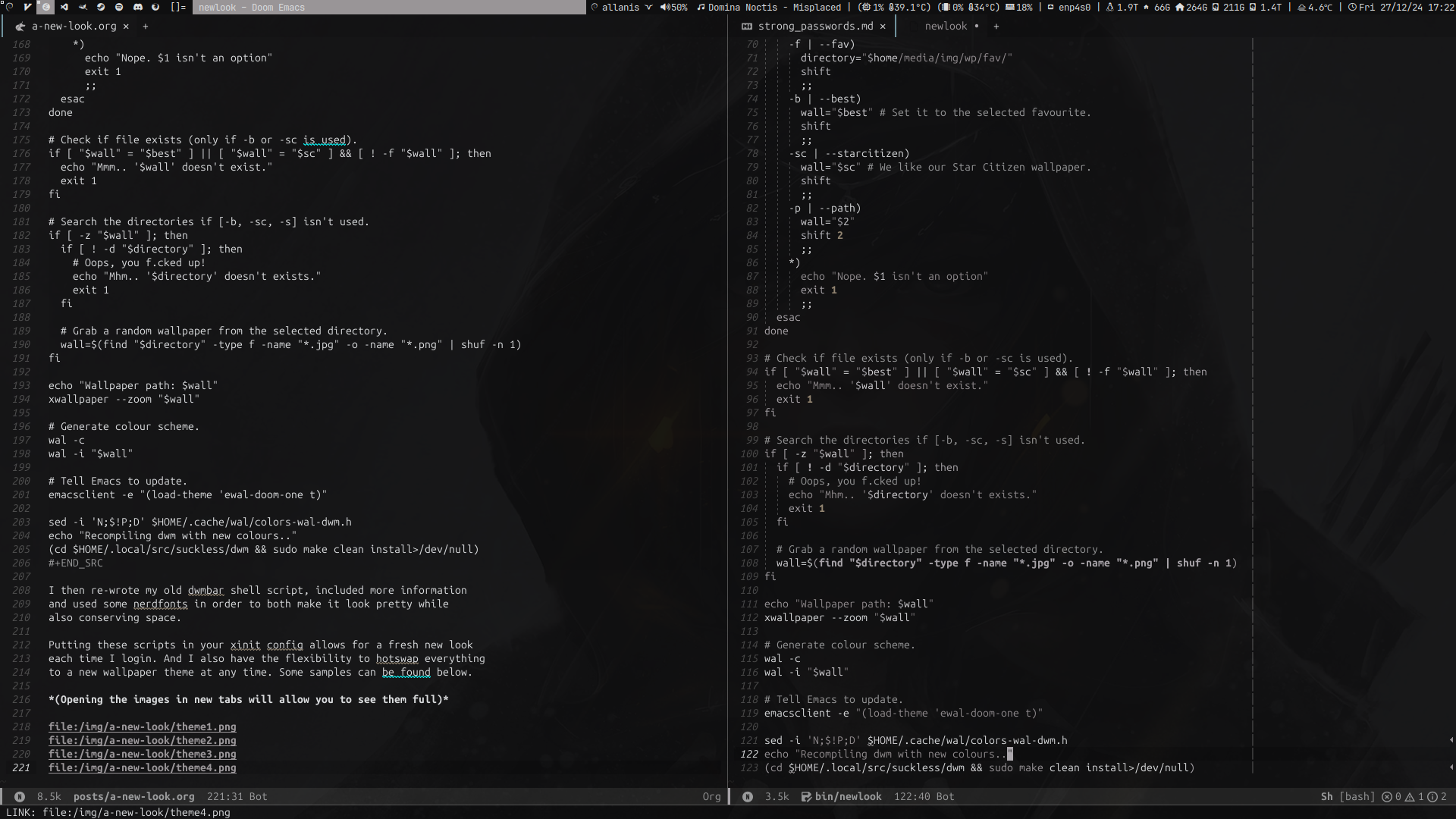
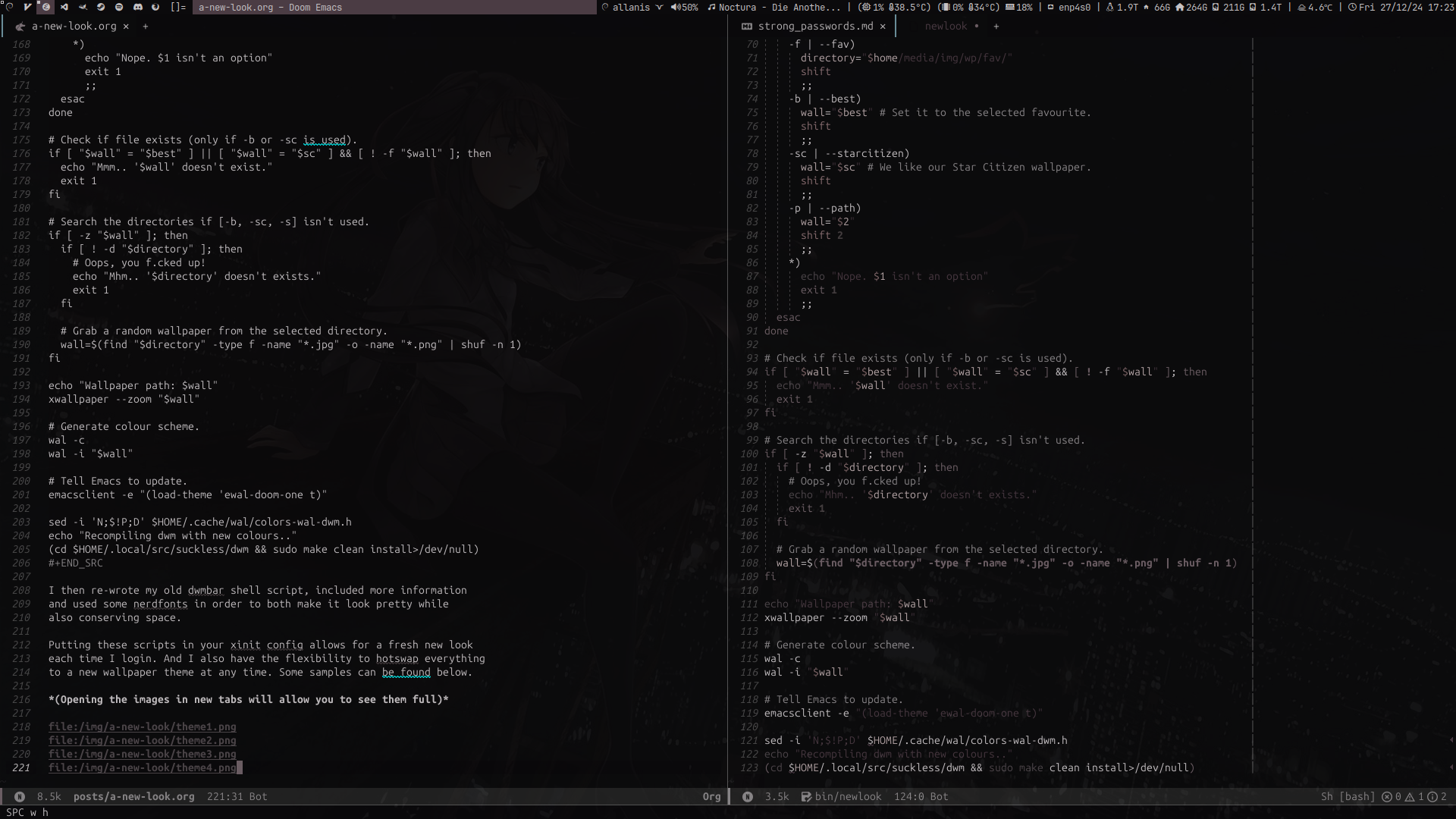
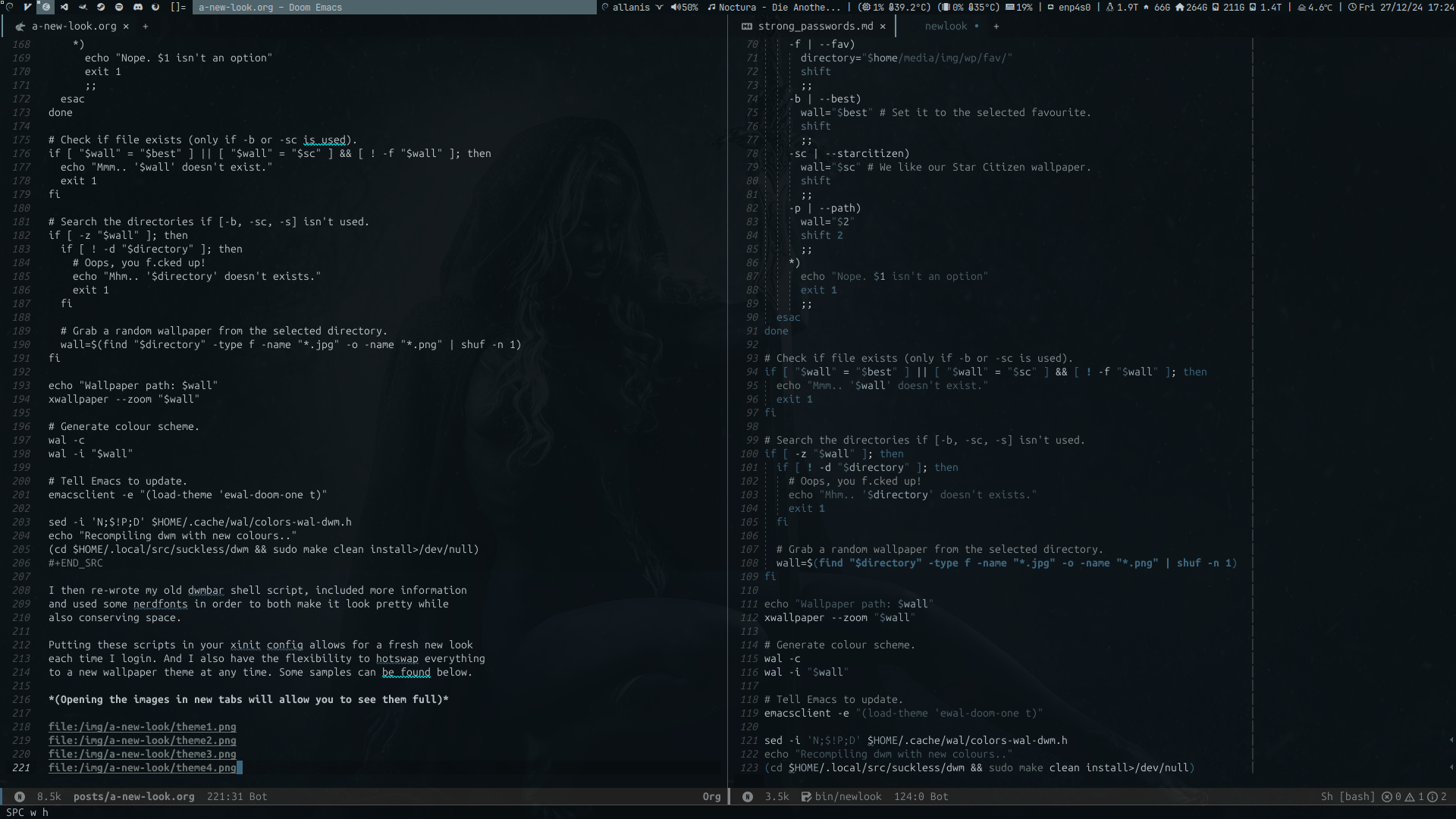
Conclusion
I'm thrilled with this new look and feel. While functionality remains my top priority, it's nice to have consistent colour schemes across my desktop. The new terminal colours are easier on the eyes, although I have to be mindful of the wallpapers I choose, as some don't work well with the 5% opacity I have set for my terminals.
I'm pleased with the extra information in my status bar, but I'm already running out of space!
Set default directory to favourites.
directory="$home/media/img/wp/fav/"
best="$home/media/img/wp/fav/wallhaven-76yowv.jpg"
sc="$home/media/img/wp/fav/wpsc.png"
# Select wallpaper manually. -- Not really working correctly, will re-visit.
select_wallpaper() {
local files=("$@")
local selected=
# Display files with numbers.
for i in "${!files[@]}"; do
printf "%2d) %s\n" "$((i+1))" "${files[$i]}"
done
while true; do
read -rp "Select a wallpaper (1-${#files[@]}): " selected
if [[ "$selected" =~ ^[0-9]+$ && "$selected" -ge 1 && "$selected" -le "${#files[@]}" ]]; then
break
else
echo "Invalid input. Enter a number between 1 and ${#files[@]}."
fi
done
# Return the selected file.
printf"%s\n" "${files[$((selected-1))]}"
}
# Process command line arguments.
while [ $# -gt 0 ]; do
case "$1" in
-h | --help)
echo "Usage: $0 [OPTION]"
echo " -p --path Select a wallpaper from filepath."
echo " -s, --select Browse and select a wallpaper manually."
echo " -m, --misc Select a wallpaper from the misc catagory."
echo " -f, --fav Select a wallpaper from the fav catagory."
echo " -b, --best Select a wallpaper from the misc catagory."
echo " -sc, --starcitizen Select a wallpaper from the misc catagory."
echo " -h, --help Display this help message."
exit 0
;;
-s | --select)
# Get a list of wallpaper files.
echo "Searching directory: $directory"
wallpapers=($(find "$directory" -type f -name "*.jpg" -o -name "*.png"))
# Call the select_wallpaper function.
wall=$(select_wallpaper "${wallpapers[@]}")
echo "DEBUG: \$wall = $wall"
shift
;;
-m | --misc)
directory="$home/media/img/wp/misc"
shift
;;
-f | --fav)
directory="$home/media/img/wp/fav/"
shift
;;
-b | --best)
wall="$best" # Set it to the selected favourite.
shift
;;
-sc | --starcitizen)
wall="$sc" # We like our Star Citizen wallpaper.
shift
;;
-p | --path)
wall="$2"
shift 2
;;
*)
echo "Nope. $1 isn't an option"
exit 1
;;
esac
done
# Check if file exists (only if -b or -sc is used).
if [ "$wall" = "$best" ] || [ "$wall" = "$sc" ] && [ ! -f "$wall" ]; then
echo "Mmm.. '$wall' doesn't exist."
exit 1
fi
# Search the directories if [-b, -sc, -s] isn't used.
if [ -z "$wall" ]; then
if [ ! -d "$directory" ]; then
# Oops, you f.cked up!
echo "Mhm.. '$directory' doesn't exists."
exit 1
fi
# Grab a random wallpaper from the selected directory.
wall=$(find "$directory" -type f -name "*.jpg" -o -name "*.png" | shuf -n 1)
fi
echo "Wallpaper path: $wall"
xwallpaper --zoom "$wall"
# Generate colour scheme.
wal -c
wal -i "$wall"
# Tell Emacs to update.
emacsclient -e "(load-theme 'ewal-doom-one t)"
sed -i 'N;$!P;D' $HOME/.cache/wal/colors-wal-dwm.h
echo "Recompiling dwm with new colours.."
(cd $HOME/.local/src/suckless/dwm && sudo make clean install>/dev/null)